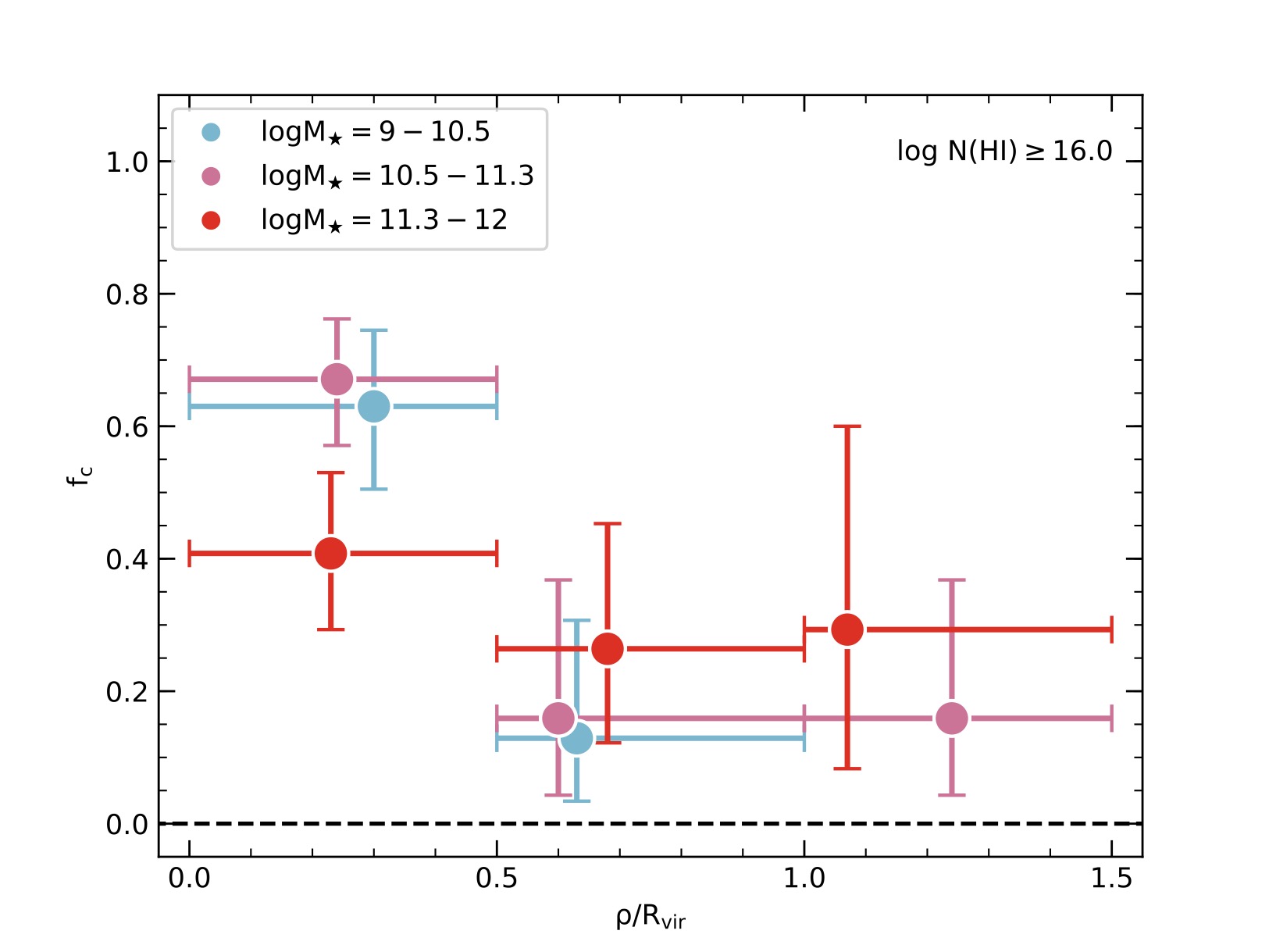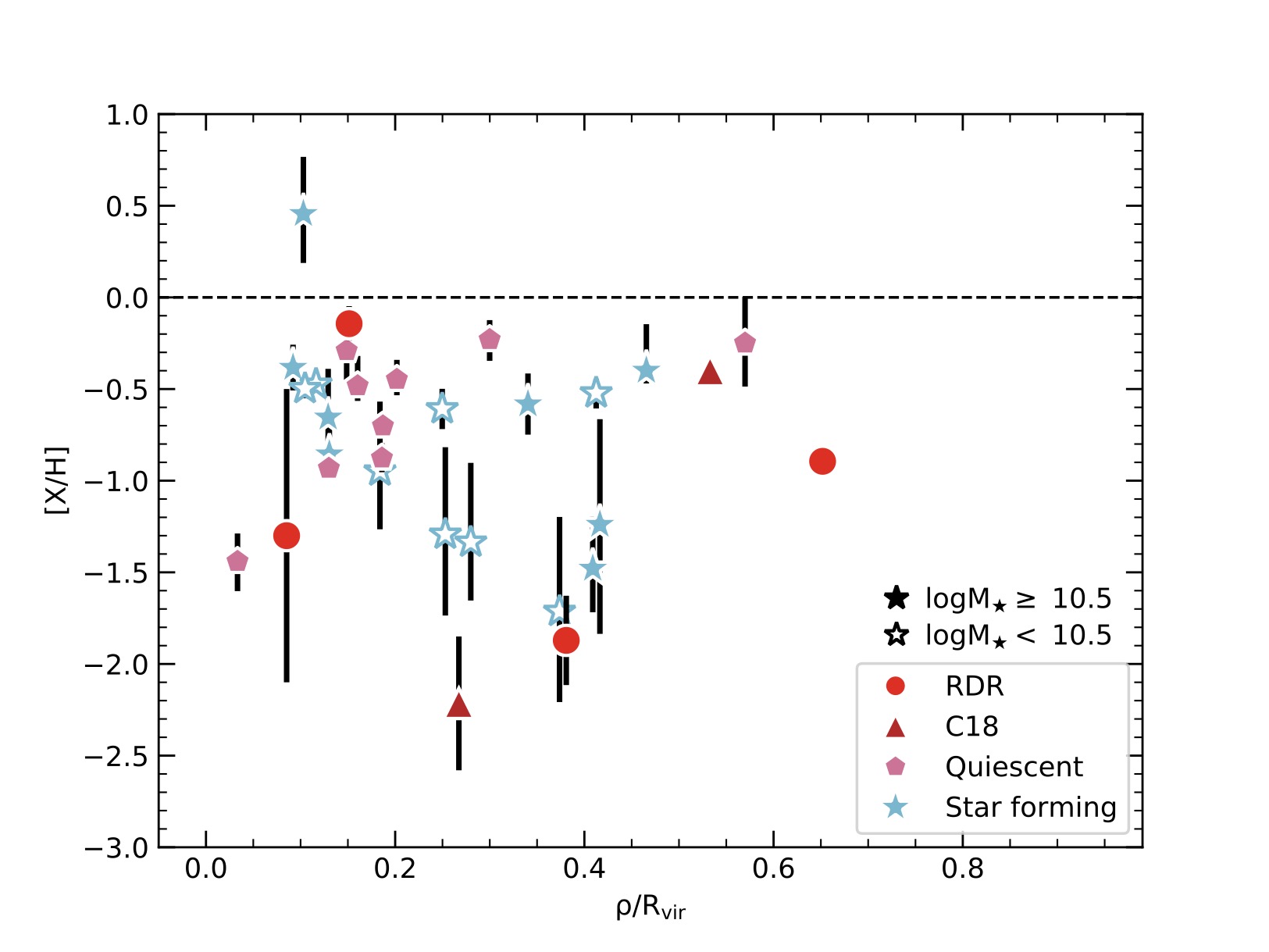The Red Dead Redemption Survey
Prevailing theory states that galaxies accrete new material through two major pathways: cold-mode and hot-mode accretion.
Gas that is accreted during cold-mode accretion is able to stay cool and be used for future star formation.
In hot-mode accretion, any new, low-metallicity material from the intergalactic medium entering a galaxy halo will shock-heat and be unavailable to fuel future star formation until it cools again.
Hot-mode accretion only occurs in high-mass halos, yet prior to my work, remained observationally untested.
RDR1 (Berg et al. 2019) is a pilot survey using archival HST observations of luminous red galaxies (LRGs) at z~0.5, where I measured the HI covering factor in their halo with QSO sightlines and calculated the metallicity of the gas.
LRGs are high-mass galaxies (~3L*) that extend to ~500 kpc on average. This places them within galaxy groups and clusters, and they should solely exhibit hot-mode accretion.
In RDR1, I measured a covering factor in these halos to be ~27% within the virial radius for gas with an HI column density greater than or equal to 16.0 (Lyman limit systems and above).
When comparing to other galaxy samples, we did not find a strong dependance of the covering factor with stellar mass, as described by theory.
Additionally, I found low-metallicity gas of 1.5% solar metallicity in these halos. This gas should not be housed in these halos, as this is a signature of cold-mode accretion.
Below are some key figures from my paper.
RDR2 (Berg et al. in prep) is a follow-up survey using HST/COS G140L observations of QSO sightlines probing within 40% of the virial radius of LRGs at z~0.5 to determine the prevalence of low-metallicity gas in their halos.
I again measured the cool HI covering factor in this inner region and found it to be ~34% for gas with an HI column density greater than or equal to 16.5.
Using the surveys mentioned above, we found a slight difference in the covering factor with stellar mass, but not at the canonical value of log(M*)=10.5.
I also measured the gas metallicity and found several low-metallicity absorbers. Not only is there a large amount of cool gas in these high-mass halos, there is also a large amount of low-metallicity gas.
This implies fresh IGM accretion occurring in these halos.
Stay tuned for the paper! I am happy to provide my thesis chapter for this project upon request.

